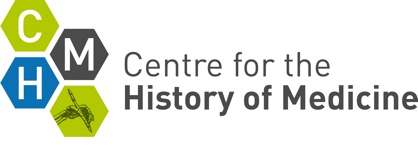On the 4th of December 1961, Enoch Powell, then Minister for Health, confirmed in the House of Commons that ‘birth control pills’, as he called them, could be prescribed on the NHS. Now in its sixth decade, the availability of the contraceptive pill on the National Health Service has become an expected and central element of state-sponsored birth control. Yet, the decision by the Ministry of Health in 1961 to provide contraceptive services marked a distinct departure from its previous reluctance to offer birth control through the National Health Service.
Prior to its introduction, the provision of contraception had been confined to the work of charitable family planning clinics, particularly those run by the Family Planning Association (FPA) and Marie Stopes. GP services in particular had proved reluctant to engage in the provision of either birth control advice or the supply of contraceptives. By the 1960s, the development of the contraceptive pill, the wider availability of more reliable latex condoms and the introduction of plastic intrauterine devices all gave greater control over reproduction. Contraceptives were becoming easier to use and therefore more popular. Yet, in many ways it was the pill that has been emphasised as one of the most significant medical advances of the twentieth century, over other types of contraception. It is seen to have played a leading role in the postwar emergence of the women’s liberation movement as well as enabling greater sexual freedom for women as well as men. However, it has also prompted health scares and moral debates – which come into particular focus within the context of a national health service.
The contraceptive pill was developed during the 1950s by American scientists led by Dr Gregory Pincus and with the support of women’s rights campaigner Margaret Sanger. As a hormone-based contraceptive it mimics the conditions of pregnancy and therefore offsets conception. The result was the first commercially available oral contraceptive – Enovid in the USA (licensed in 1960). Britain undertook clinical trials of the pill during 1960 with varying results in Birmingham, Slough and London, but the Ministry of Health nevertheless approved its availability on the NHS. The development of the pill changed the role of doctors and pharmacists in the provision of contraceptives. Oral contraception required medical advice and it was because of this that the medical profession became more involved in providing family planning services.
In October 1961, the medical advisory committee of the Family Planning Association recommended that oral contraceptives, such as Conavid, should be available in FPA clinics. This was initially the main source of supply, but with the decision to make the pill available on the NHS, prescriptions from general practitioners increased rapidly during the early 1960s. The number of brands of the pill available in the British market had increased from five in 1963 to fifteen in 1966. Patients increasingly attended their GP surgeries asking about birth control pills and receiving prescriptions for them and by 1970, 700,000 married women between 16-40 who were on the pill obtained it through their GP.
Health scares dogged the pill from its introduction, with reports emerging in the US shortly after its launch that linked its use with blood clots, strokes and heart attacks. By the 1970s, reports showed that smoking and taking the pill increased the risk of blood clots. The number of users began to dip in the early 1980s due to scares about its safety and this recurred in the 1990s, when fears about thrombosis received significant media attention.
The National Health Service continued to adapt to the popularity of the pill for both married and single women. The National Health Service (Family Planning) Act of 1967 empowered Local Health Authorities (LHAs) to give birth control advice, regardless of marital status, using the mechanisms of voluntary organisations such as the Family Planning Association if they wished. The Health Services and Public Health Act 1968 made the same provisions for Scotland. The Health and Personal Social Services (Northern Ireland) Order of 1972 enabled the Department of Health and Social Services to provide family planning services in Northern Ireland. The 1974 reorganisation of the NHS formally incorporated family planning services into the NHS and from 1 April, all contraceptive advice and supplies provided by the NHS were free of charge regardless of age or marital status. This meant that doctors could give contraceptive advice to a girl under the age of 16 without informing her parents and that they should seek the girl’s consent to tell her parents. It was this particular element of DHSS contraceptive guidelines that resulted in a high profile campaign to control teenage sexuality.
In 1980, Victoria Gillick began campaigning to prevent her teenage daughters – and by extension all girls under sixteen – from being given contraceptive advice by NHS doctors. By 1983, she had gained the support of two hundred MPs and appeared at the High Court seeking a declaration that none of her five daughters could be prescribed or advised birth control until they were sixteen. The High Court ruled against her and rejected her attempt to prevent the DHSS from distributing a circular that facilitated the provision of contraceptives to girls under sixteen without parental consent. The following year, Gillick successfully sought an Appeal court ruling that overturned the judgement of the previous year. The issue was later settled by the House of Lords, who ruled it lawful for doctors to prescribe the contraceptive pill to under-16s under particular circumstances. The phrase ‘Gillick competence’ came into use in medical law as a result of these cases. In terms of access to contraception, it meant that provided a girl under the age of consent was able to understand the risks involved, accept appropriate advice, was resolved to have sex and wished her parents were not informed, then a doctor should be able to prescribe them contraception. The case highlighted not just the moralistic lens through which teenage sexuality and access to birth control was being viewed and shaped in wider society, but also how, by the 1980s, the contraceptive pill had become so engrained in British society, that the discussion centred not on whether those under sixteen should have access to the pill, but whether their parents should be informed and with whom the power of consent should lie.
The contraceptive pill therefore lies at the heart of the issue of birth control within the NHS. While other forms of contraception from implants and patches to IUS and injections have been incorporated into NHS birth control provision, it was the introduction of the pill in 1961 that brought family planning into the medico-social encounter and its later incorporation into NHS legislation made it a political as well as social issue. It effectively separated sexual activity from reproduction for the first time, securing a place within the domestic and international contraceptive market that remains unabated today.
JH
Further Reading:
Vanessa Heggie, The Guardian ‘54 years of the Pill (on the NHS) and how Birmingham women got it first’, 4 December 2015
Jessica Borge, ‘How ‘Orals’ Altered the Contraceptive Marketplace in 1960s Britain’, 2 November, 2014
Lara L. Marks, Sexual Chemistry: A History of the Contraceptive Pill (New Haven: Yale University Press, 2001).
Should you wish to remove a comment you have made, please contact us



I was a student in Oxford 1967-1970. I do remember a specific incident of a mature woman student in a long term relationship who was refused by a City’s GP the Contraceptive Pill because she wasn’t married. A friend who’s father was a GP in Shropshire told me about a clinic in East Oxford who prescribed an implant regardless of marital status. It was only removed several years later after I’d been married to my friend’s brother. I’m mentioning this as I went to a discussion on The Politics & Culture of the 60’s by Univ Sheffield & few people were aware of the marriage certificate needed at the GP.